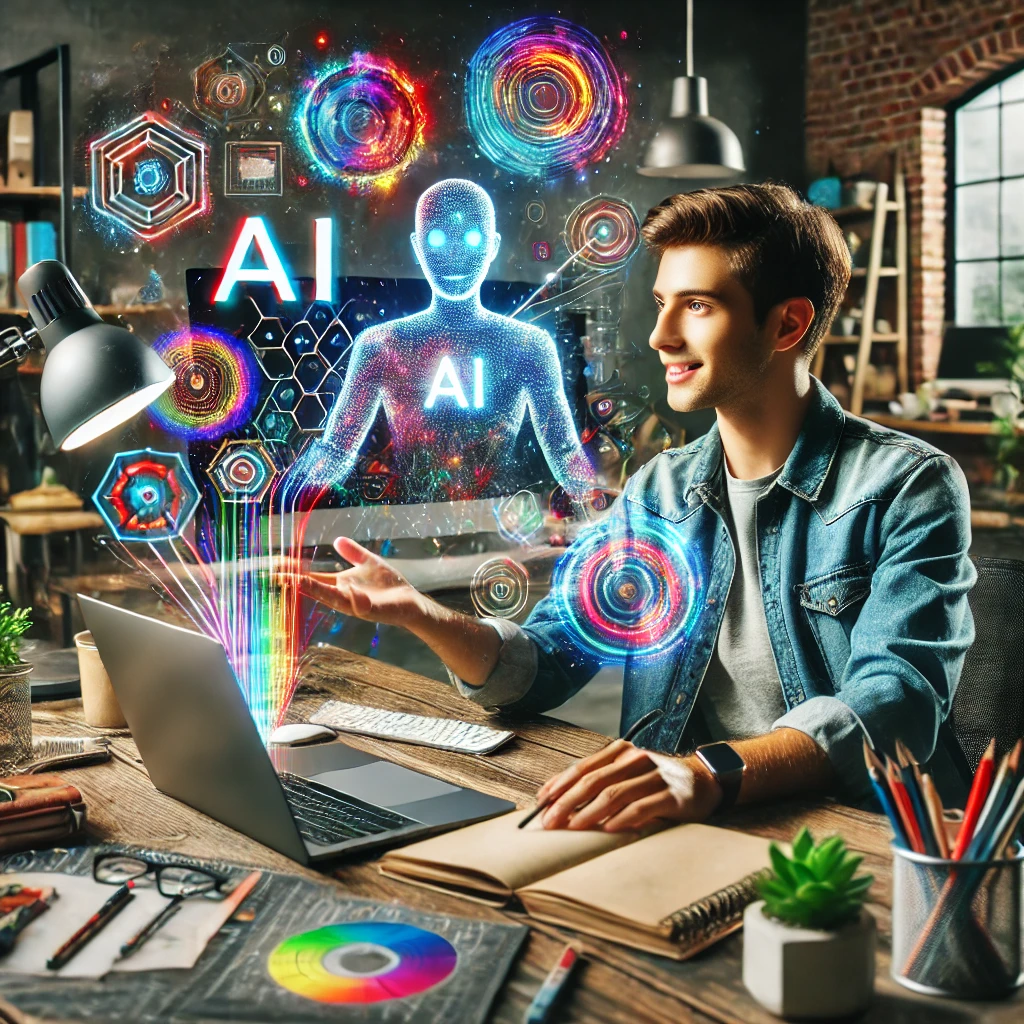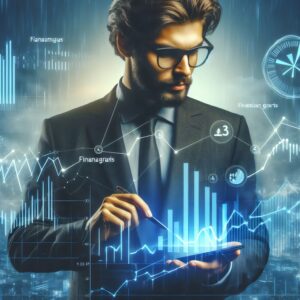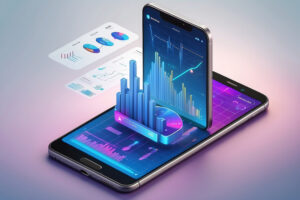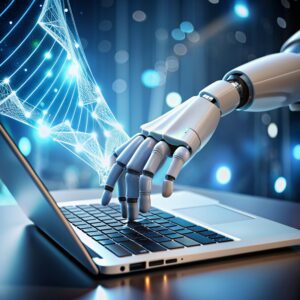AI Won’t Kill Creativity—It Will Enhance It. Here’s Why.
Creativity thrives at the heart of human expression, and I’ve often wondered if artificial intelligence could ever dim its spark. As someone deeply invested in the arts, I’ve heard the whispers of fear—concerns that AI might swoop in like a shadowy thief, stealing the essence of what makes us unique. But after diving into this topic, I’ve come to a different conclusion. Far from snuffing out our creative fire, AI acts as a bellows, fanning the flames of imagination by clearing away the tedious clutter that bogs us down. It’s not about replacement; it’s about empowerment. In this journey, I’ll share why AI won’t kill creativity but will instead lift it to new heights, drawing from real-world insights and personal reflections. Let’s peel back the layers of this technological marvel and see how it’s reshaping the creative landscape—not as a foe, but as a friend. Imagine a world where artists, musicians, and writers spend less time on grunt work and more time dreaming—what could that mean for us all?
We strongly recommend that you check out our guide on how to take advantage of AI in today’s passive income economy.
Table of Contents
The Evolution of AI and My Perspective
I didn’t start out as an AI evangelist; my path began in a different realm altogether. With a background in industrial-organizational psychology, I spent years studying how people work, think, and create. That curiosity led me to data science, then to leadership roles like Chief Data Officer, and eventually to heading an AI advisory group. Over two decades, I’ve watched AI evolve from clunky algorithms to the sleek, powerful tools we have today—like large language models and image generators. Back in the 1950s, AI was a seedling, limited by the lack of computing muscle. Now, it’s a towering tree, branching into every corner of our lives. But here’s the thing I’ve learned: AI isn’t here to uproot creativity. It’s more like a gardener, tending to the mundane so the flowers of imagination can bloom. When I think about tools like MidJourney or ChatGPT, I see potential—not peril. They’re not magic wands, but they’re mighty helpers if you know how to wield them.
AI as an Empowerment Tool
Picture this: I’m sitting at my desk, sketching out an idea for a vibrant abstract painting. I want it to echo Jackson Pollock’s wild energy, but I’m stuck on the details. Enter AI. With a tool like Stable Diffusion, I type in a prompt—“chaotic splashes of color in Pollock’s style”—and within moments, I’ve got a starting point. It’s not perfect, but it’s a spark. I tweak the prompt, adjust the hues, and suddenly, I’m not bogged down by a blank canvas—I’m riffing off something tangible. That’s the beauty of AI as an empowerment tool. It doesn’t hand me a finished masterpiece; it gives me a springboard. For creatives, this means less time wrestling with the mundane and more time diving into the deep end of inspiration. But it’s not automatic—you’ve got to learn the art of prompting, like a musician tuning an instrument. Without that skill, the output’s just noise.
The Limits of AI in True Creativity
Now, let’s get real—AI has its limits, and that’s where the human soul shines. I once asked an AI to craft a scene of heartbreak for a short story I was working on. It spat out a decent image: a lone figure crying under a gray sky. But something was missing. The tears were there, but the why wasn’t. AI can mimic patterns—like a sunset in oils or a Mozart-inspired melody—but it doesn’t feel the ache of loss or the thrill of discovery. It’s a pattern-weaver, not a storyteller. I’ve seen it generate stunning visuals, but they lack the texture of brushstrokes on canvas or the raw emotion of a live performance. Creativity isn’t just about output; it’s about intention, vulnerability, and the messy beauty of being human. AI can’t replicate that—and honestly, I don’t think it ever will. That’s our domain, and it’s sacred.
AI and the Mundane: A Creative Lifeline
Here’s where AI truly wins me over: it’s a lifeline for the boring stuff. I used to spend hours scouring stock photo sites for the perfect image for a blog post—clicking, scrolling, sighing. Now, I punch a prompt into an AI tool—“vibrant cityscape at dusk”—and boom, I’ve got a custom visual in seconds. It’s not about cutting corners; it’s about saving time for what matters. In my work with creative teams, I’ve seen this play out again and again. Musicians use AI to whip up a quick beat, freeing them to layer in their own flair. Writers draft outlines faster, leaving room to polish the prose. It’s like hiring an assistant who never sleeps—one that handles the grunt work so I can focus on the art. The result? More ideas, more experiments, more me in the final piece.
Creativity Meets Innovation
I’ve always believed that creativity and innovation are two sides of the same coin, and AI proves it. Think about the tech world—companies like Tesla didn’t just tweak the status quo; they flipped it upside down. That took vision, yes, but also a willingness to rethink everything. AI brings that same spirit to the arts. I’ve met founders of AI startups who weren’t coders but dancers, sociologists, communicators—people who saw tech as a canvas, not a cage. They’re using AI to ask big questions: How do we reach new audiences? How do we tell stories in fresh ways? It’s not about logic alone; it’s about dreaming bigger. When I advocate for the arts to lawmakers, I don’t just talk dollars—I talk transformation. AI amplifies that message by showing us new paths to connect and create.
Adapting to AI: A Necessary Shift
I’ll admit, I’ve met artists who shudder at the mention of AI. They see it as an intruder, a soulless machine meddling in their craft. I get it—change is scary. But here’s the truth I’ve come to embrace: AI isn’t going anywhere. It’s like the smartphone or the internet—once the box is open, there’s no stuffing it back in. Ignoring it won’t protect us; it’ll just leave us behind. I’ve seen small arts groups outpace bigger ones because they leaned into AI—using it to streamline newsletters or mock up designs. It’s not about selling out; it’s about staying relevant. If I ran a nonprofit, I’d treat it like a business tool—not a tax dodge, but a way to amplify my mission. The choice isn’t fight or flight; it’s adapt or fade. And I’d rather adapt.
AI for Resource-Challenged Creatives
One of my favorite revelations about AI is how it levels the playing field. I’ve worked with tiny organizations—think three-person teams with shoestring budgets—who can’t afford a fancy marketing crew. AI steps in like a superhero. Need a blog post? Feed it your voice and let it draft something you can tweak. Want a video script? It’ll sketch one out, saving you hours. I’ve seen it in action with electronic dance music producers—AI whips up a baseline, and they build a banger from there. For cash-strapped creatives, this isn’t just efficiency; it’s survival. It lets us punch above our weight, spreading our message without breaking the bank. Sure, it’s not flawless—sometimes it’s like a rookie intern’s first draft—but it’s a start. And starts matter.
Strategic AI: Solving Real Problems
Here’s where I get geeky: AI isn’t just a toy; it’s a strategist. I keep an app called Perplexity AI on speed dial—it’s like a brainy sidekick. Recently, I asked it, “How do I reach 30- to 45-year-olds for my arts project?” It didn’t just guess—it scoured data and suggested platforms like Instagram over LinkedIn, plus content ideas that’d resonate. I’ve used it to dissect customer churn too—feeding it stats and letting it ask me questions to pinpoint the issue. It’s like having a consultant who doesn’t charge by the hour. For arts groups losing audiences to streaming giants, this is gold. We can’t compete on budget, but we can outsmart with AI—finding our crowd and speaking their language.
Best Practices and Tools for AI Newbies
If you’re new to AI, don’t sweat it—I wasn’t born knowing this stuff either. Start simple: identify a problem. Maybe it’s slow email responses or endless editing. Then pick a tool. ChatGPT’s great for writing; Claude’s solid for brainstorming; Perplexity AI blends research with chat. I love Fixer AI too—it scans my inbox, drafts replies in my tone, and saves me from blank-page panic. The trick? Iterate. My first prompt might flop, but I tweak it—“add more humor” or “focus on Gen Z”—until it sings. It’s like sculpting clay: rough at first, then refined. Don’t chase perfection; chase progress. And don’t sleep on metrics—track what works. AI’s a toolbox, not a silver bullet, but the right tool at the right time? That’s magic.
Data, Metrics, and the Arts
I’m a numbers nerd at heart, and I think data’s the future of arts funding. Picture this: I’m pitching to a policymaker, and instead of just saying, “Art transforms,” I show them stats—audience growth, engagement rates, community impact. That’s not fluff; it’s proof. I once worked on a project in a village where data revealed trust flowed through the chief, not outsiders. We pivoted, got his buy-in, and sustainable farming took root. In the arts, it’s the same—metrics like ticket sales or social reach tell us what’s clicking. They don’t dictate our creativity; they guide our output. If I ran an arts group, I’d track everything—because turning impact into investment means speaking the language of results. AI makes that easier, crunching numbers so we can focus on the why.
The Human Element: Where AI Stops
At the end of the day, AI’s a tool—not a soul. I’ve felt this deeply in my own creative pursuits, from acting to music. Art’s about vulnerability, connection, the stuff that makes us human. AI can draft a script, but it won’t weep over the lines. It can mimic a symphony, but it won’t feel the crescendo. That’s our job—to pour heart into the frame it builds. I see AI as a collaborator, not a competitor. It handles the mundane—scheduling, drafting, crunching—so I can wrestle with the big ideas. Imagine a world where every artist has 10 extra hours a week for their craft. That’s not a threat; that’s a revolution. AI won’t kill creativity—it’ll set it free.
Defining Art in an AI World
So, what’s art to me? It’s a slippery thing—subjective, raw, alive. I’ve stood in museums, moved by a swirl of paint, while others walked past unfazed. I’ve felt a song hit me like a wave, knowing it’d bore someone else. Art’s our way of baring our passions, of stitching emotion into form. AI can mimic it, sure, but it can’t live it. That’s why I’m not afraid—because art’s power lies in our humanity, our flaws, our stories. It’s vulnerability turned to strength, a bridge between souls. AI might help us build it faster, but we’re the ones crossing it. And in that crossing, we find what makes us—and our creativity—irreplaceable.

We strongly recommend that you check out our guide on how to take advantage of AI in today’s passive income economy.




